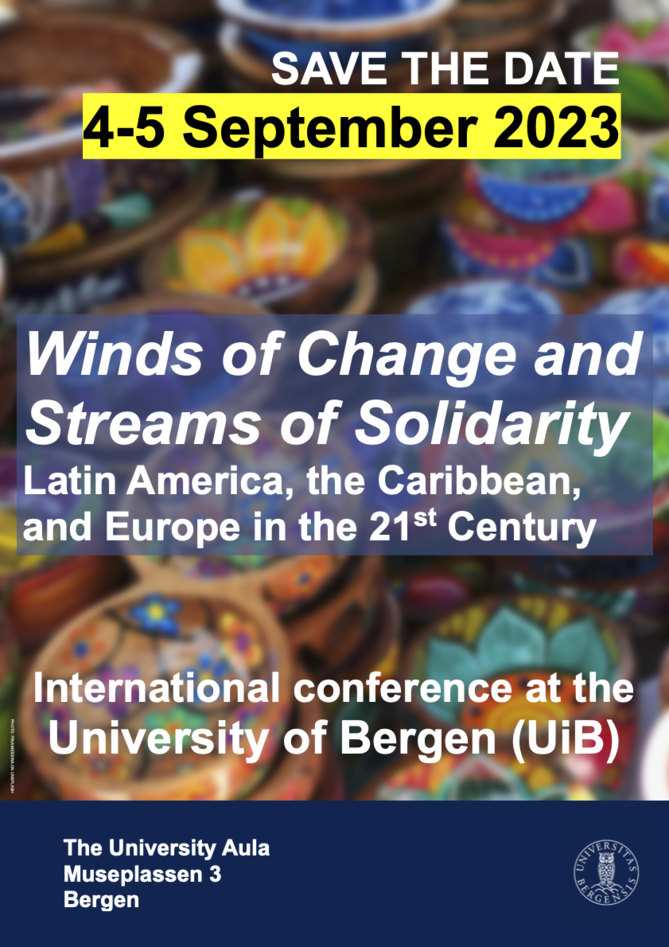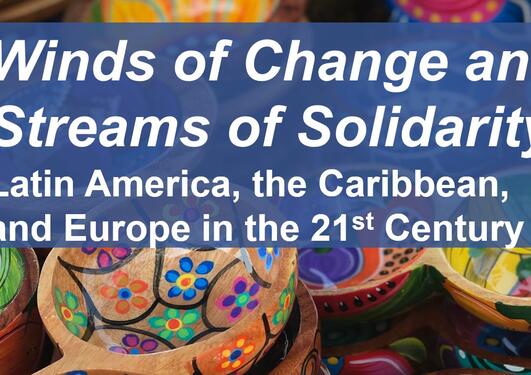Q&A: Ernesto Semán
Historian Ernesto Semán recommends a visit to Buenos Aires for its energy, raves about Chilean TV series Los ’80, waxes lyrical about the mountains of Latin America, and bakes medialunas, an Argentine version of croissants, for his guests.

Main content
- In this weekly series we interview the members of the programme committee for the conference “Winds of Change and Streams of Solidarity: Latin America, the Caribbean, and Europe in the 21st Century”.
- Why should Europeans care about what’s going on in Latin America and the Caribbean?
“Because of entanglements. Climate change has made visible what for many has been obvious for ages: From food to technology to nature to politics — it’s hard to understand them isolated. Today, the undertones of Norway’s opening to the outside world are those of economic domination and political influence associated with its economic power. This is clearer in Latin America than anywhere else. From lithium to water to oil to gas to avocado, the notion of a region as an infinite reservoir of resources for Norwegian wellbeing crashes against the reality of a region that is producing robust answers to the problems that consumption and economic expansion generate.”
- What can students learn from visiting Latin America or the Caribbean?
“Three things: 1) Obvious one: Language. From dominant Spanish to hundreds of indigenous languages to Portuguese to Haitian creole—audible expression of an infinite cultural diversity. 2) Get some perspective: I remember one of my Norwegian students shocked to see that ‘normal’ mountains were 5,000 meters high. 3) Norway is going through significant transformations, as wealth, transnationalisation, and inequality are on the rise. There’s a lot to learn from Latin American society and history about the challenges ahead in terms of political ideas and innermost social fabric of a different ‘politics of affect’.”
- What is your favourite place in Latin America and the Caribbean, and why?
“Buenos Aires. I’m biased, of course, it’s the city I’ve spent a big chunk of my existence in. But the energy and wide range of cultural life, every day and everywhere, from all social classes and ethnic groups and forms and ideas and topics is something I have not seen anywhere else. I have a special love affair with the Reserva Ecológica in the southern part of the city, where flowers and birds and other animals are your company next to the river, the widest you can imagine.”
- If you should recommend one book from/on Latin America and the Caribbean, which would that be?
“On Latin America: CLR James’ The Black Jacobins. The author, from Trinidad and Tobago, was a Marxist Black historian who, in the 1930s, became the first to locate the Haitian Revolution as the most radical example of the Age of The Revolutions usually associated with the French and American ones. Slaves in St. Domingo led by Toussaint Louverture became the first to abolish slavery and to create the first Black Republic. The Black Jacobins reframed the history of Latin America and the Western Hemisphere.
From Latin America: I’d probably go for Juan Rulfo’s Pedro Páramo, an overwhelmingly perfect novel. But, of course, I’m unfairly leaving aside thousand other writers and their books.”
- And if you should recommend one film or movie from/on Latin America and the Caribbean, and why?
“Lucrecia Martel’s La Ciénaga [The Swamp]. Powerful. I recently watched it (again) at the Cinemateket in Bergen, Norway. I haven’t felt so asphyxiated and shocked in years. A simple story of decay that is so obviously related with personal, national, and global dwindling narratives.”
- What is your favourite telenovela, and why?
“Hands down, Los ‘80 from Chile. A TV series more than a telenovela, but still. Acting, script, narrative tension, fun, the stories of a family and the history of a country, everything is so perfect. Each season is a year, from 1982 (the year of the ‘debt crisis’ in Latin America, which hit hard on middle class families) and ends in 1990, with the demise of the Pinochet regime and the rise of new hopes for the Herrera family.”
- Who is your favourite music artist from Latin America or the Caribbean?
“Charly García. Old rock and roll with a unique “porteño” undertone from Argentina, his lyrics and “imperfect” singing are like the old minstrels telling us about love and all else in the big city.”
- When you invite Norwegians home, what dish/food from or inspired by Latin America and the Caribbean do you cook? And why is this dish/food special to you?
“I could go on forever on this... I usually make medialunas, an Argentine version of croissants, with a delicate balance of sweet, moist and flavour that is (I’ll try to be diplomatic here) different from the Norwegian approach to ‘boller’. They’re ubiquitous in Buenos Aires. I also make chocotorta, the least fancy thing on Earth: a cheap and very simple cake made with chocolate cookies and dulce de leche, that you can get for your birthday in Argentina. I also love to make ‘sopaipillas’ a fried tortilla made from flour and pumpkin. It’s widely eaten in Chile (and in the Patagonian side of Argentina) and has some mapuche origins.”
- What is the one thing that Norwegians could learn from Latin Americans and Caribbeans?
“Probably, there is something real in the cliches about how some cultures with Latin origins (in this case, bending the definition for a region with indigenous and Spanish and/or French backgrounds) mould more direct interpersonal relations. Physical contact, but also forms of sharing and values and affects are different from Norwegian, and so are the benefits and challenges they present.”


